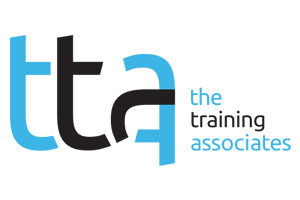There are five common mistakes that most organizations make when training their managers, but the good news is that, once identified, these mistakes can be corrected by refining the investment, design and target audience of manager training programs.
Here are the five major mistakes and practical strategies for overcoming them.
Mistake No. 1: We assume management training is one-size-fits-all.
Most manager training programs fail to distinguish between two important management types. These are leading individual contributors (enablement managers) and coordinating team production (flow managers). The specific nature of the work, accountability and work structure all shape what managers actually must accomplish in the workplace and whether they are enablement managers or flow managers. Most, if not all, management training content fails to make this crucial distinction. The reason this distinction is important is that each of these two management types requires a different prioritization of skills development in a training program.
How to fix it:
- Identify which category a manager falls into using a short assessment regarding whether the role requires talent assessment, coaching, team development and judgment about people (enablement) versus whether it requires project execution, resource coordination, timeline management and technical delivery (flow).
- For enablement managers, training should emphasize these skills: hiring, motivating and engaging employees, providing feedback, coaching, demonstrating empathy and emotional intelligence, and building trust.
- For flow managers, training should emphasize these skills: task allocation, goal setting, business execution focus, problem-solving, decision-making and communication.
- Of course, training content can overlap the two groups, but the emphasis of training content should differ based on which type of manager is being trained.
Mistake No. 2: We believe the best individual contributors automatically will become the best managers.
Most individuals who are promoted into management positions were top performers in individual contributor roles, even when their skills don’t transfer well to managing others. This is the Peter Principle in action: people rise to their level of incompetence because organizations prioritize past task performance over actual managerial capability.
The fact is that many outstanding individual contributors should never become managers. Research suggests that selecting managers based on objective assessments of decision-making and cognitive abilities results in better team performance than relying on prior individual contributor success. Research also shows that individuals who actively seek managerial roles often underperform compared to those who are randomly assigned. A randomized study found that individual contributors who self-selected into management roles performed worse than those randomly assigned. Specifically, self-selected managers had higher employee attrition rates and lower employee satisfaction compared to randomly assigned managers. Self-promoted managers tend to overestimate their social skills and exhibit overconfidence, leading to diminished team outcomes. This reinforces the need for objective assessment of managerial capability.
How to fix it:
Organizations should invest in carefully identifying and then training only those individuals best suited to objective assessment rather than those who either performed the best as an individual contributor or who proactively expressed interest in assuming a manager position.
- Implement a manager readiness assessment that evaluates candidates on key competencies before selecting them for manager training.
- Establish selection criteria that prioritize demonstrated leadership behaviors and potential over past individual performance metrics or self-nomination.
Mistake No. 3: We underestimate how much managers act in their own self-interest.
We design manager training programs as if managers always prioritize organizational goals over their personal interests. Training often focuses heavily on what managers should do (e.g., fair evaluations, promoting talent mobility, supporting organizational goals) without addressing the psychological realities that managers are motivated by self-preservation, loyalty to their team or personal advancement. Research shows that 75% of managers admit to “talent hoarding,” suppressing staff mobility or inflating performance ratings to preserve team strength or avoid conflicts.
How to fix it:
Manager training programs should teach managers how to recognize and manage their own biases and self-interest and how aligning personal/team success with broader company goals actually benefits them, too.
- Build modules into training that explicitly address the tension between personal/team interests and organizational interests.
- Include interactive scenarios and reflection exercises about managing favoritism, resisting talent hoarding and making objective evaluations even when it feels risky.
Mistake No. 4: We assume personality traits or leadership style determine great managers.
It’s common to find personality traits emphasized in manager training programs. Training programs highlight traits such as charisma, confidence, extroversion and assertiveness. What the research shows, however, is that skills, not traits, are what drive results. Proximal, trainable skills (i.e., coaching, task allocation and decision-making) are equally or more predictive of managerial success. Similarly, there are many manager training programs that emphasize adopting a specific “leadership style” (i.e., servant, situational, transformational) or archetypes (i.e., strategist, operator, visionary.)
Training a manager to adopt a specific leadership style often involves training the specific approach that the manager should take with respect to decision-making, communication, goal setting and conflict resolution. However, the research shows that leadership style is not a fundamental determinant of effective managerial performance. Many manager training programs are over-rotated on traits and style while it is actually the structured development of skills that can turn individuals without these traits, styles or archetypes into highly effective managers.
How to fix it:
- Prioritize skill building in the areas discussed earlier, based on manager type.
- Design training programs that focus on observable and learnable management behaviors — such as conducting effective one-on-ones, setting clear goals and resolving conflict — rather than trying to mold managers to adopt a fixed leadership style or archetype.
Mistake No. 5: We under-invest in manager training, especially for first-time and front-line managers.
Among the five mistakes, this is by far the most egregious one. The capability of managers really matters to an organization’s bottom line. Studies show that a manager who is one standard deviation better in managerial ability improves their team’s output by approximately 0.23 standard deviations. This stands in contrast to a similarly skilled worker which contributes about 0.13 standard deviations. In other words, a great manager boosts team performance about 77% more than hiring an additional great individual employee. The upshot of this is that developing strong managers is one of the most powerful ways an organization has to improve. Despite the importance of manager capability on performance, nearly 60% of leaders report that they received no formal leadership training before becoming a manager. Even when training is offered, it is “ad hoc” or minimal. A survey of 500 U.S. managers found that even those managing teams of three or more often received only a few hours of training.
How to fix it:
- Provide effective first-time and front-line manager training for every There are cost-effective, scalable manager training solutions available that can help any organization achieve this objective.
- Regularly evaluate the effectiveness of your manager training programs using rigorous evaluation methods. The return on investment (ROI) on these programs can be significant but must be validated using appropriate methods. Most, if not all, organizations make at least one of these five mistakes in training their managers. The good news is that there are straightforward ways to address these mistakes and the benefits of doing so are well worth the effort for every organization.









